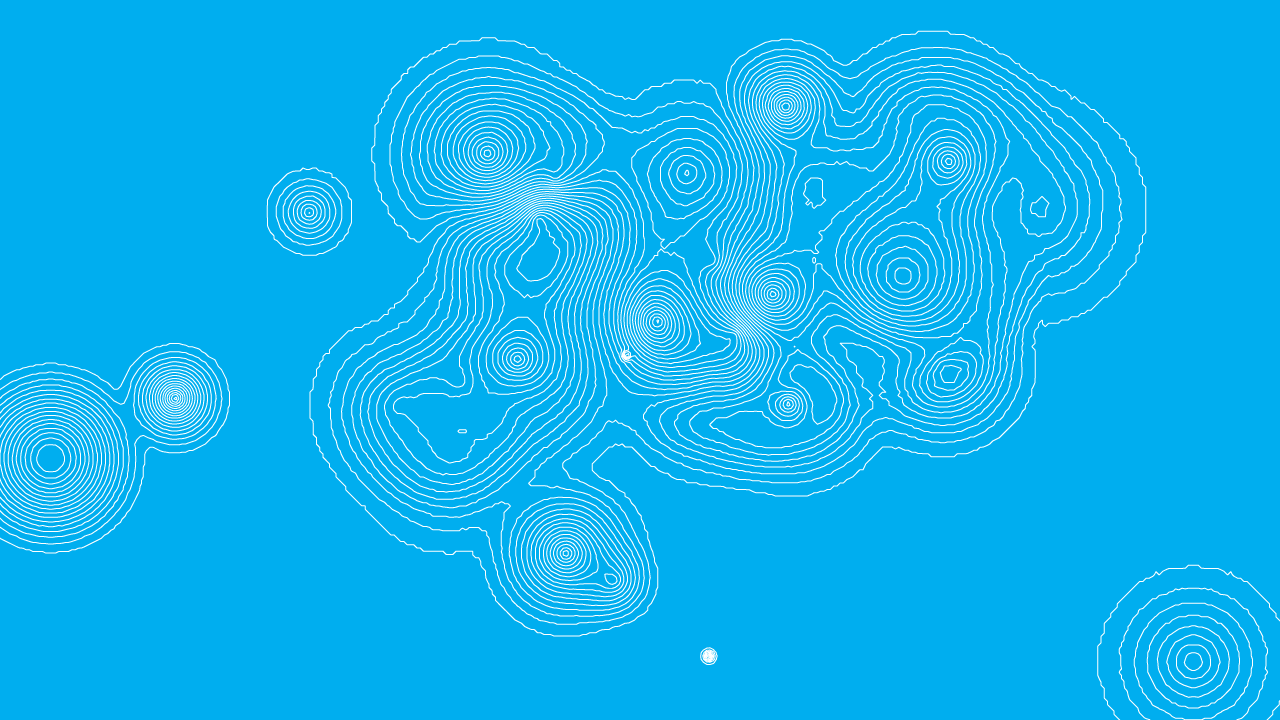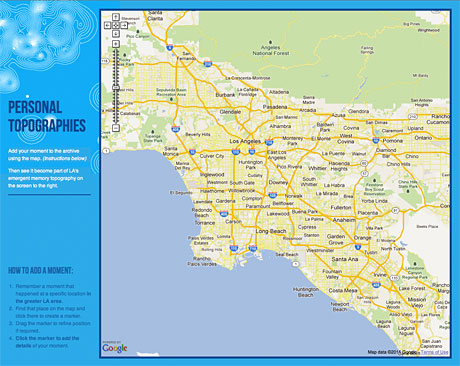
Personal Topographies
- Context:
- Academic
- Date:
- Launch:
An exploration in Memory and Mapping
This project collects an archive of personal moments and uses them to plot Los Angeles on an emergent memory topography.
Brief
For Week X, we were asked to “Choose one project that you were excited by, that provoked more questions than answers for you, a project that held an idea, method, medium, or form in which you see an exciting direction for your future work” and develop it further.
Concept
I have always associated memory with space and location. Maps become storytelling devices, helping me to recall and revisit memories. With the rise in recent years of online mapping technologies and gps tools, geolocated ‘memories’ have become commonplace in the digital world.
Maps are perceived as authoritative artifacts; consistent reference points by which we make informed decisions. Memories, on the other hand, are often referred to as being unreliable or inaccurate, and yet, on a personal level, they are often the ‘maps’ that inform our future decisions. Maps are of course not exact interpretations, they are representations of a place; recordings of how a landscape was experienced. Memories are, in a similar way, subjective interpretations of moments.
What might our maps look like if they were generated using our personal data rather than the geographic information compiled by cartographers? How might our cities look if they were mapped on the landscapes of our moments, memories and experiences there?
This project explores these questions by collecting an archive of personal moments and using them to plot Los Angeles on an emergent memory topography.

Final processing sketch plotting Los Angeles on an emergent memory topography
Process
This project builds on my projects for Authoring Critical Media earlier in the term, 48 Moments and Between Moments.
I wanted to return to the Processing stage of this project, because there were ideas there that I wanted to explore further. I also thought it would be a good opportunity to spend some more time learning how to use Processing as a tool in future design projects.
I created a webpage which uses Google Maps and a simple database to collect moments and memories linked to location from friends and fellow students.
Taking this growing archive of moments, I explored how I could use Processing to generate an alternative topography for Los Angeles from the experiences of its inhabitants.

Moment submission site

Alternative contour mapping approach explored in Processing
Reflections
While reading essays for our Design Research class, I was particularly engaged by Terence Rosenberg’s essay ‘The Reservoir’ : Towards a Poetic Model of Research in Design. He draws on the Nietzschean concepts of the neo-Apollonian and neo-Dionysian paradigms. The neo-Apollonian philosophy promotes rationalism in the strictest sense. The neo-Dionysian disposition on the other hand opposes the “objectivity” of the rationalists with an intense subjectivity.
These concepts were fresh in my mind as I was working on this project, and it became a means for me to explore how these contrasting paradigms are at play in the structures around us. Maps are perceived as authoritative artifacts; the type of rational, structured model central to the neo-Apollonian way of knowing the world. Memories, on the other hand, are often referred to as being unreliable or inaccurate, but to the neo-Dionysian they are the greater truth, essential to the celebration and exploration of the private and the personal.
Although I feel the finished form of the project might have been more successful in representing this dichotomy, it was nonetheless an invaluable means of exploring these broader ideas and identifying a key area of interest for me around which an ongoing line of inquiry might form. Ideas, questions and interests began to come together in a more structured manner as I worked on developing the project.
This is yet another example of how the process of design has become a means of discovery for me in recent months.